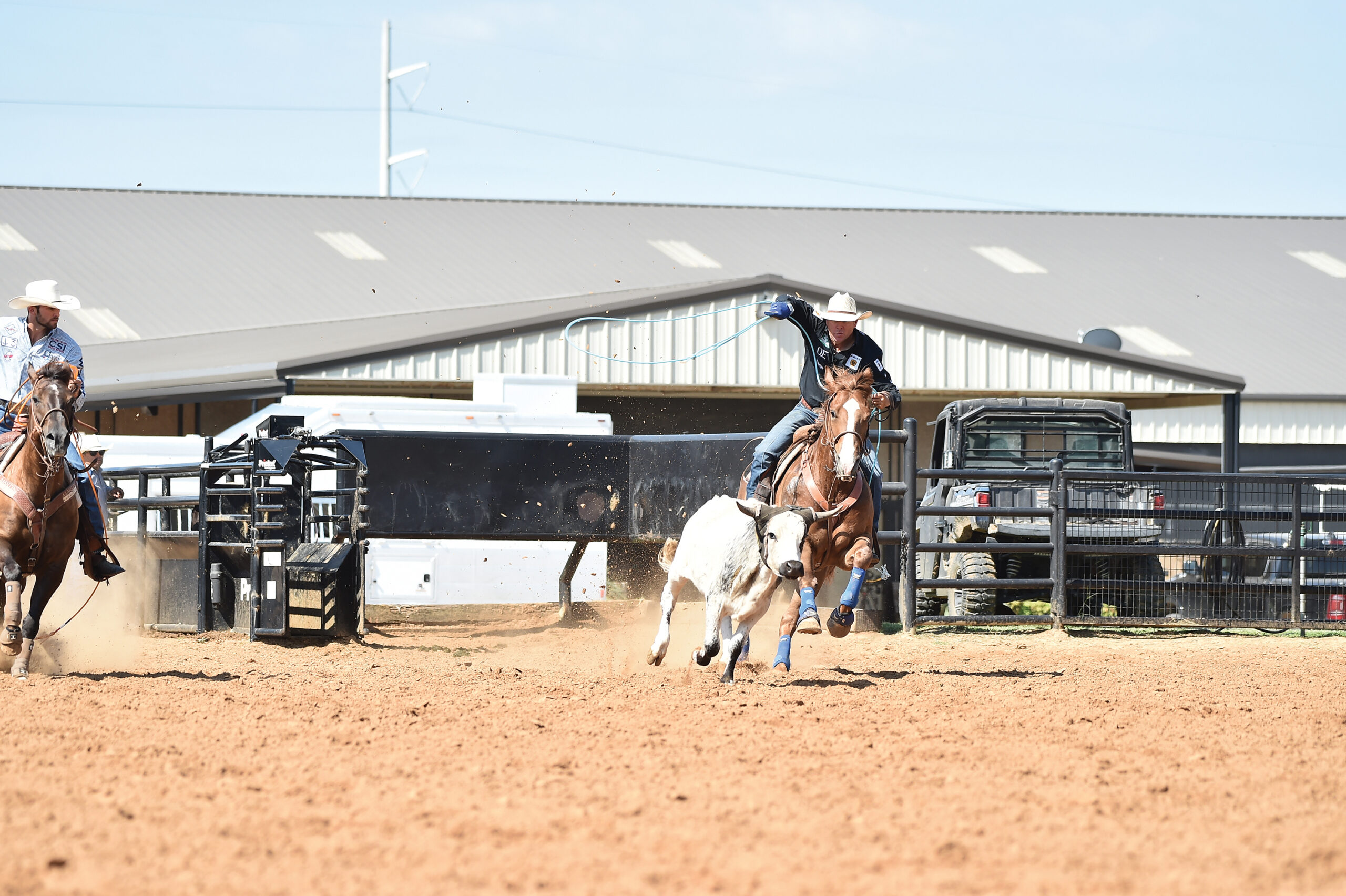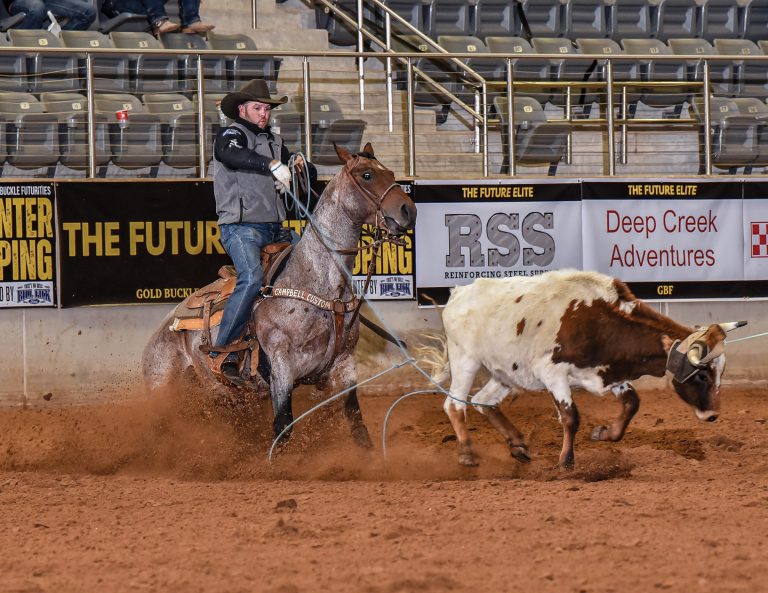Roping in a small arena? There are some definite advantages.
Not everyone has access to an indoor arena all winter long, and I recognize how lucky I am to have the best of both worlds here in Decatur.
But in plenty of parts of the country, horse trainers have to have an indoor arena or haul to an indoor arena to keep working green horses year-round. So what I’m about to say applies to people who have access to indoor arenas or just smaller arenas in backyards that aren’t wide open. What comes to my mind also are these little Arizona arenas where you can just go with the steer every time. They lock on immediately because you’ll run out of real estate if they don’t.
[READ MORE: Practice Paradise: The Best in the World’s Arena Dimensions]
In the indoor or smaller arena, everything runs a pattern and nothing is as big of an obstacle. I can tell you where every steer is going to run within 10 or 15 feet. It’s so much easier for a horse to pick up the cow and stay in control.
Outside—or in a big indoor—they have to run and find the cow and stay in their lane. It’s just a much greater challenge with more variables for most horses.

It can be the best of both worlds to go back and forth between big and small arenas. They can learn their position in more of a controlled environment in a smaller arena. You can run to a certain area and hold them, and that gives them a lot of confidence. But you can shelter them.
Writing this column, we’re getting ready to go to the BFI, and I’m considering riding my 4-year-old. If he hadn’t already been given the chance to perform in both setups, I could surprise him at something like that event if he hasn’t been exposed to picking the cattle up in certain scenarios.
[READ MORE: Now You See Them: Curry Kirchner and Tyson Thompson Win The Feist]
The bigger the arena, the slower I like my cattle, so I can actually let them out with daylight or more. And then I can let my horse go without kicking so he learns to pull himself to the steer instead of me kicking and pushing to the steer.
When I feel like they’re picking them up out there, it’s important to not kick a horse while you’re teaching in the beginning. That will serve you the rest of their careers, because you won’t be asking them for their lives from the start. That will give you more buttons to press down the road and train them to want to run to the cow wide open. TRJ











